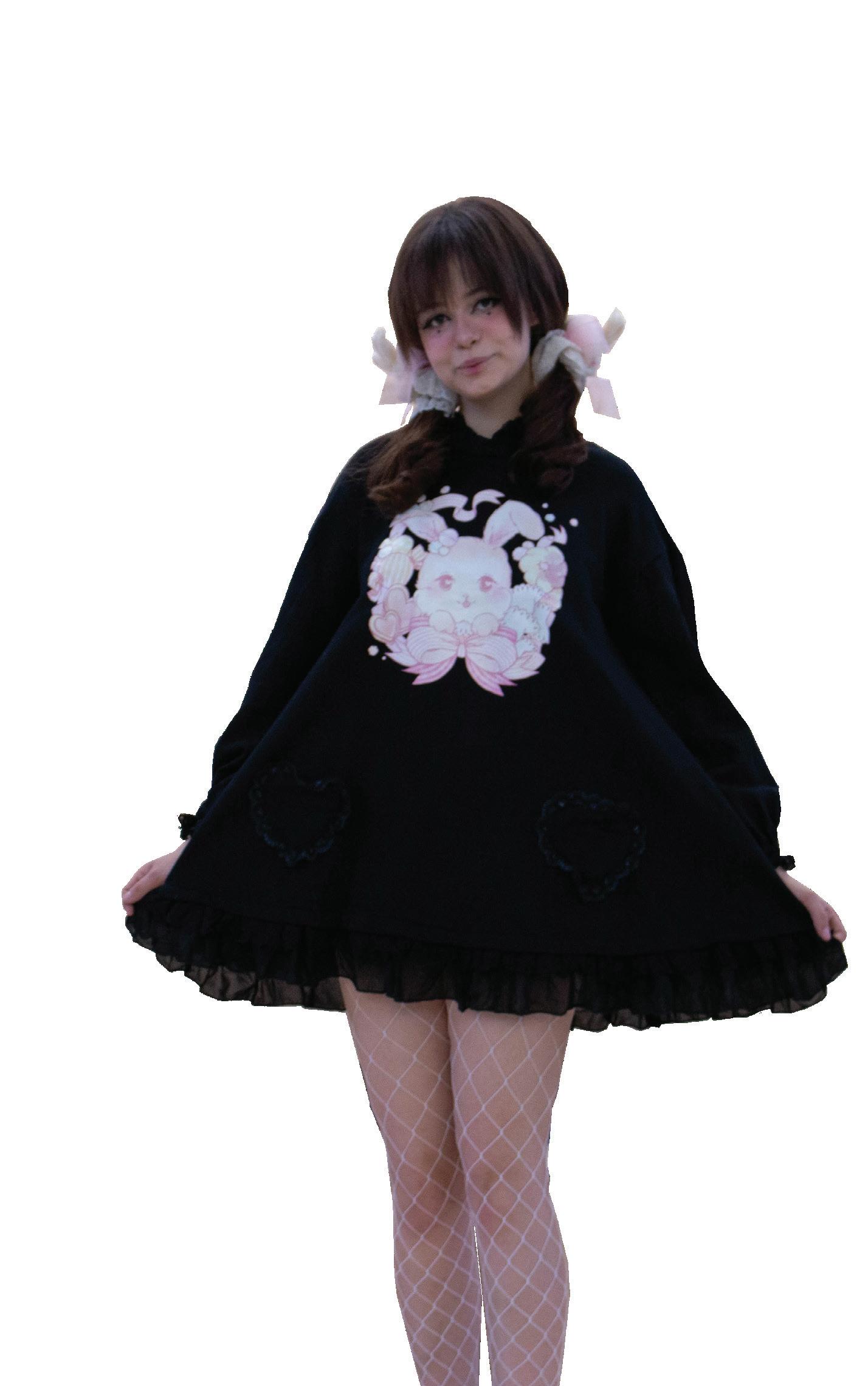
13 minute read
Fashion Q&A
February
Style Where do you shop? “Online, mostly. Like AliExpress and YesStyle.”
Advertisement
How would you describe your style? “J&K fashion, Japanese fashion and Korean fashion mixed together.” Do you have a favorite brand or store? “Really just anything on AliExpress, but for fancier stuff, I like this one brand, Angelic Pretty and Lizz Lisa.” Senior
Chloe Fraiser
Do you have a favorite outfit or clothing item? “I like wearing dresses… you can just put it on and then it’s cute and you don’t have to worry about it.”
What fashion trend do love? “I love the oversize cute kind of fashion, because it’s so easy to put on, and it’s cute and comfortable at the same time.”
What fashion trend do you hate? “I really don’t like fanny packs, I think they look stupid. I’m gonna get hate for that.”
What’s your favorite animal? “Cats.”
What’s your favorite color? “Pink, definitely.”
Tell us something interesting about yourself. “I really like science and math… I like fashion and math and stuff at the same time… I feel like that’s somewhat unusual.”
What inspires your style? “The Instagrammers that I follow… and certain fashion models in Japan.”
Is there anything else that you want Free State students to know about you or your style? “I feel like people should shop online more because the clothes like it may look kind of extravagant, but it’s a lot cheaper if you shop for clothes on AliExpress, for example… It’s really nice.”
Rebuilding the School pages by Angel Singhal photos by Nicholas Burket story by Ridwan Firman
There is no question about the fact that there are many issues in high school that both students and faculty are unhappy about. The overwhelming workload of students and staff has sparked a desire for change. As a result, throughout the country, numerous school districts are embarking on a process called redesign in which these problems are being addressed.
Aimee Landwehr teaches social science classes and is one of three co-pilots leading the efforts. The other co-pilots are graphic design teacher Michelle Salmans and science teacher Steve Heffernan.
“The purpose of redesign is to improve the outcomes for all students coming through Kansas schools,” said Landwehr. “It is an initiative that has come down from the state and they have essentially given a directive for schools to find solutions to whatever problems we have that are going to work best for our students.”
Efforts that have been made to solve these issues include having multiple faculty meetings centered around redesign, gathering feedback from students through social skills lessons, and having a student blitz in which a few

students from each grade came together and tried to come up with solutions for issues that they had. In this gathering, students were encouraged to “think wrong” in order to get more imaginative and out-of-the-box solutions.
Ashley Mai is a sophomore that attended the redesign student blitz. “I think the way that the redesign team tried to get student input through getting them to ‘think wrong’ was a great way to let students think about things they believe could never happen that would have actual impact to the school,” sophomore Ashley Mai said. With almost a year of researching and going through staff and student input, the redesign team has learned a lot about both the issues that the school has and possible solutions that would benefit the community as a whole. “We have a very old fashioned education system,” Landwehr said.
“Students sit in here for 53 minutes for a class period and you check off a certain number of those days and at the end of that there’s credit and so taking a step back and looking at how we can make school more reflective of what students will have to do outside of high school is one of the ultimate goals of the redesign.”
Pilot testing new changes to the school day
Math teacher Bonnie Mills asks about the “gaps” in the redesign initiative and how the redesign team could fix them. For Mills, she has noticed the current system has put stress onto both students and teachers. “I think that [the redesign process] will only make Free State High School ready for the future,” Mills said.

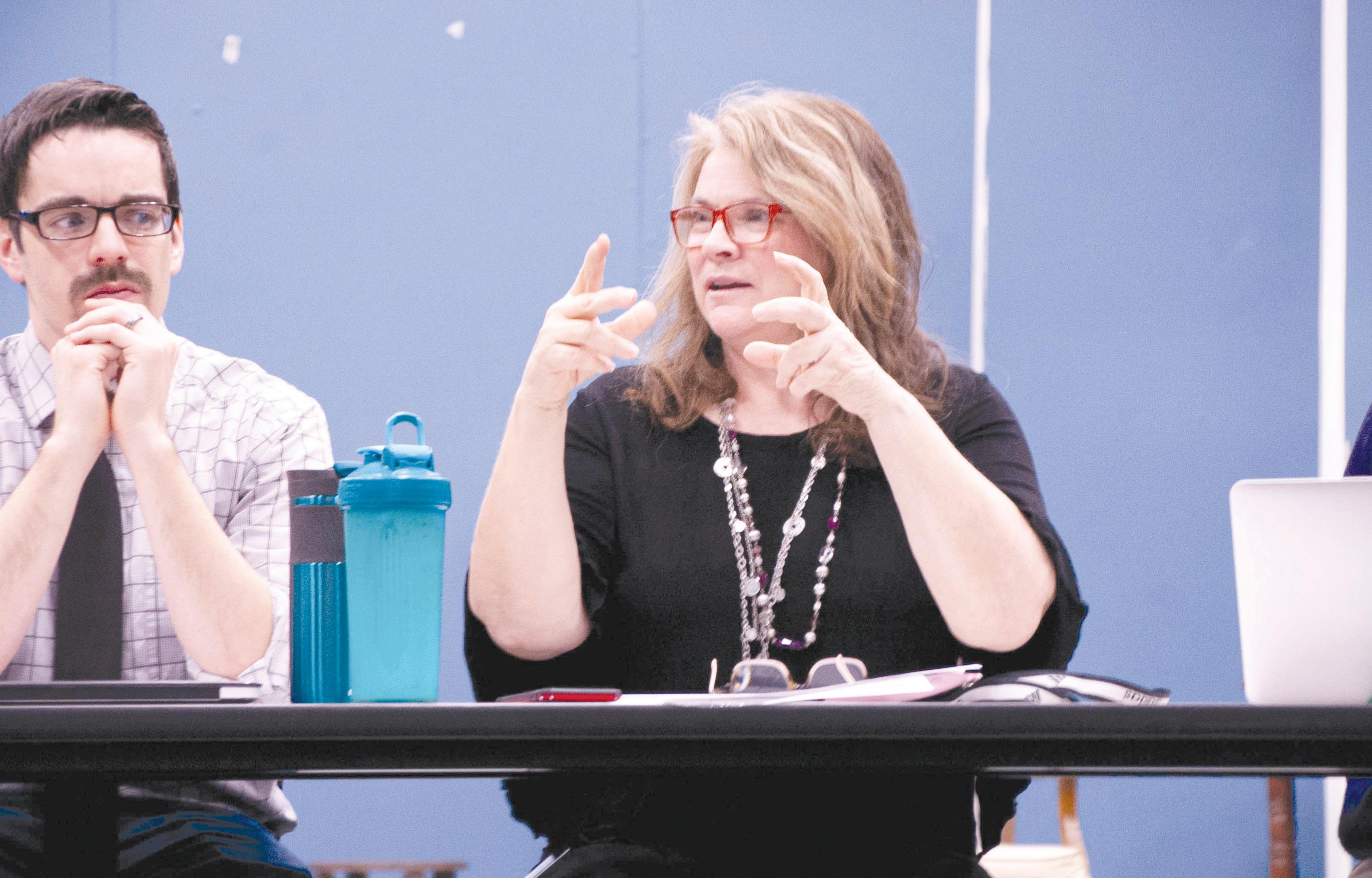
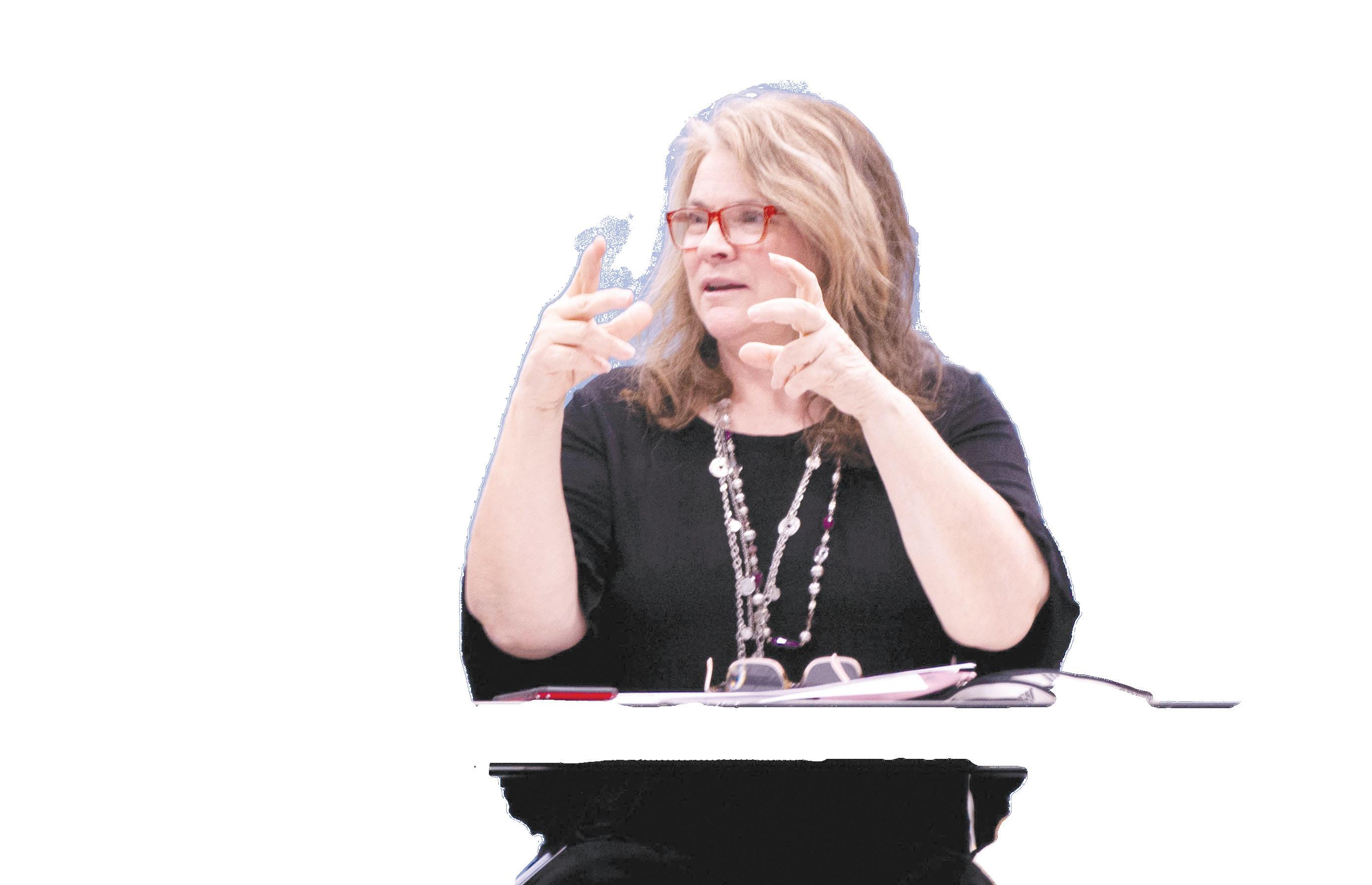
Speaking with his fellow teachers, English teacher Sam Rabiola talks about the topic of scheduling. The team looked at several forms of schedules to implement into the school day to help decrease the workload of students. “We’re looking at what sort of schedule might we be able to go to to help students keep on track to graduate with a number of credits [needed],” Rabiola said.
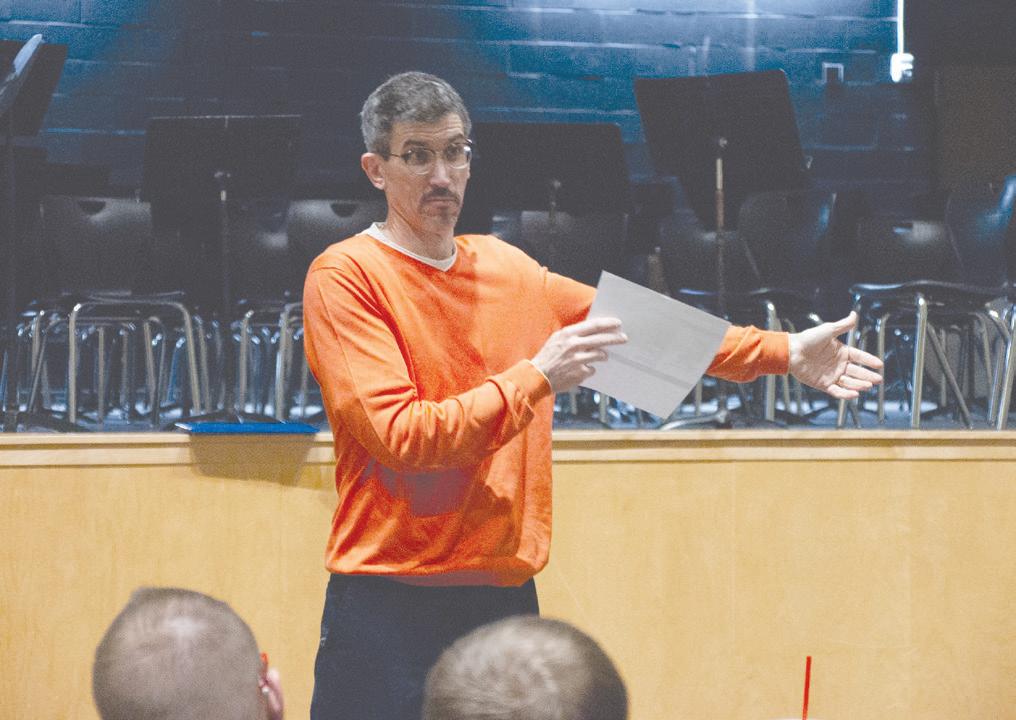
Sitting with biology teacher Sara Abeita and math teacher Bonnie Mills, English teacher Jordan Roquemore discusses the redesign progress at a Feb 11 faculty meeting. Prior to the meeting, a group of teachers visited Basehor-Linwood High School who is implementing redesign concepts. “I feel that in our group there was progress made,” Roquemore said. “If I learned anything from the school trip to BasehorLinwood, it was that those who want to be involved in the change, will be, and those who don’t, won’t be.”

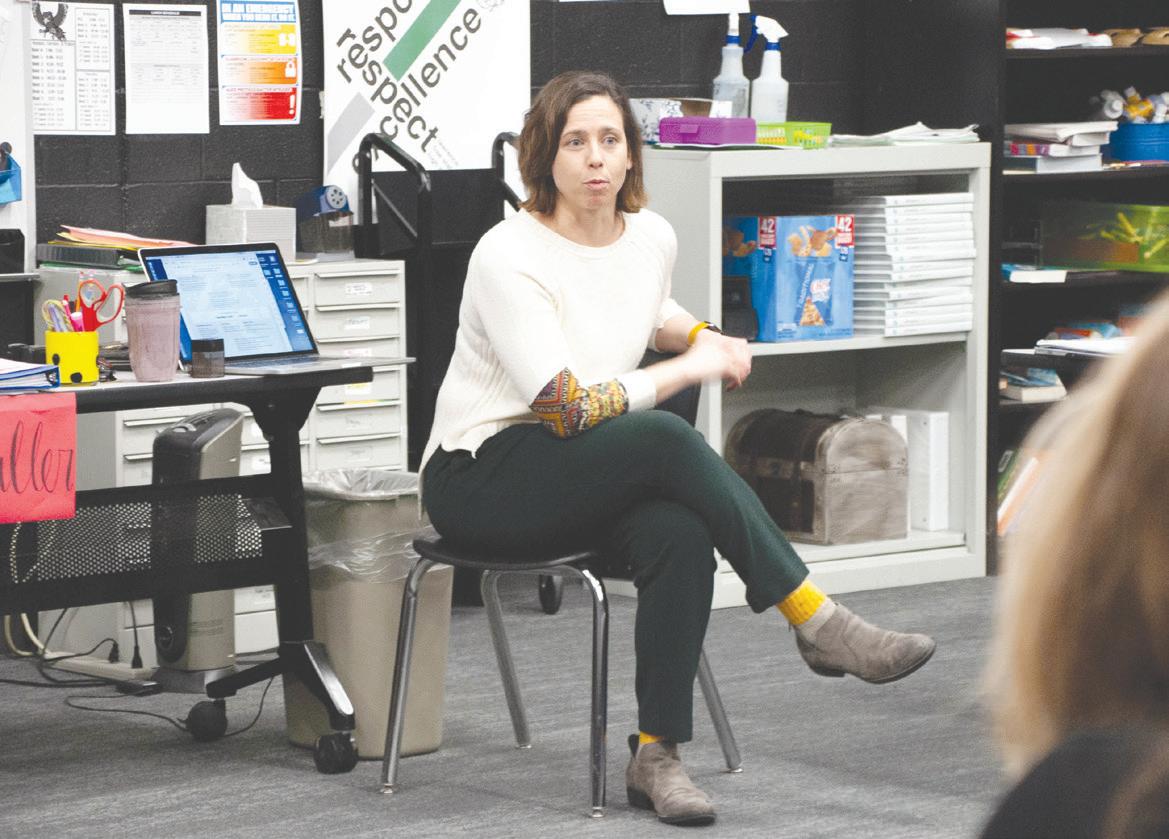

Speaking to her faculty group in the Black Box Theater, graphic design and photo teacher Michelle Salmans discusses the three goals of the redesign project: to provide balance in student and teacher workload, make the curriculum more relevant and instill habits of success. Salmans is one of three co-pilots, along with Aimee Landwehr and Steve Heffernan, leading teachers in the redesign process. “This whole concept is design thinking because that’s what we are really doing, we are just empathizing with and designing a solution,” Salmans said.
Social Studies teacher and redesign co-pilot Aimee Landwehr leads a talk on the relevance goal. The purpose of the redesign process is to cultivate successful habits within students at school to prepare them for the workforce. “Our overarching goals are helping to make education more relevant, bring balance to student’s lives and help foster habits of success for them,” Landwehr said.

Changes Being Considered
with Redesign

• Alternate ways to schedule classes ex. Flex Mod and others • Alternate ways of awarding credit
ex. competency-based learning, dual credit • Adding an advisory period to the school day
Not Enough
Time in the Day
Stressed, busy students need built-in time to keep up with school
Stress among high school students is nothing new, but it has been steadily increasing over the past years. Schoolwork combined with extracurriculars, jobs, struggles with mental health, and the general stress of being a teenager is too much for many students. Changes need to be made in response to student stress, and a study hall is a viable solution.
Currently there is no option for a study hall. Years ago, there was a required seminar period, but it was removed, leaving students who have jobs and extracurriculars with little or no time to complete schoolwork.
While some expressed concern at a mandatory study hall cutting down their elective spaces, an optional study hall could benefit those students that need it without restricting others’ schedules.
The workload of seven classes can be difficult to handle. If a student’s schedule includes advanced, AP, or concurrent enrollment classes, it can quickly become overwhelming. Many students expressed frustration about homework—that it is simply too much, and that it is often irrelevant. We believe if a student shows understanding in class, they should not be required to complete homework covering that topic.
The workload itself is not always the issue for students, though. Difficulty comes when students are involved in extracurriculars and do not have enough time for homework.
It may be easy to say that students should just be less involved in activities, but it is not that straightforward. These after school activities are taking up time for a reason: they are students’ passions and interests. Also, according to Educationcorner.com, students participating in extracurriculars rank better in GPA, and standardized testing, are more likely to plan on attending college, and have fewer absences than those who do not participate. These extracurriculars that are eating up student’s time are also what is keeping them motivated.
Many students also have jobs, and some must work to support their family. Introducing a study hall elective would be beneficial to these students, and would acknowledge that some students are busy after school not by choice, but by necessity. Mental health is another growing factor affecting stress levels of high school students. A study conducted in 2018 by the Pew Research Center found that seventy percent of high school students ages 13-17 think anxiety and depression are major problems among their peers. Concern for mental health outranked bullying, drug addiction, drinking alcohol, poverty, teen pregnancy, and gangs by at least fifteen percent. Rates of severe mental illness are increasing as well. Fifty-two percent more students ages 12-17 experienced major depressive episodes in the last year. Serious psychological distress in the last month in students of the same age group increased seventy-one percent (Age, period, and cohort trends in mood disorder indicators and
suicide-related outcomes in a nationally representative dataset, 2005–2017. Journal of Abnormal Psychology).
This data only reflects more serious mental health issues, so it is worth noting that many other students struggle with mental health in smaller ways. A study hall period would not directly solve this problem, but it could provide a time for students to relax or even go speak with a counselor or social worker. Many students are overwhelmed by stress, and school needs to change to combat this. An optional study hall period could help students stay caught up with school, especially those who are involved in extracurriculars, have jobs, struggle with mental health, or simply feel overwhelmed by classwork. Countless people in our school are struggling, and it is time to create new options to assist our student body.
Staff Editorial:
Our staff editorial reflects the general opinion of The Free State Journalism staff.

fiveFreedoms Podcasts exemplify a modern take on First Amendment
Voices should be heard. Sometimes I hear a story and wish I had the power to amplify it. So many speeches to hear, so little time.
My current obsession is podcasts. Hearing people discuss different topics as I go on with my day brings a certain calm. Often I’ll put in my ear buds, play a recent episode of a podcast I follow, and continue what task I have. I don’t like having complete silence, it’s rather deafening, so I’ll listen to the latest news and ramblings.
Perhaps I’ll start one someday, but for now, I’m content with just listening.
Listening to them, I learn to appreciate my ability to do so. I’ve heard several criticizing the American and foreign governments. I remember sitting in history class and hearing about governments suppressing their critics. I don’t believe people here always appreciate that right today.
Last summer, I visited Hungary, a former Soviet satellite state. It would be witless to say they have the same rights.
I remember going on a tour called “Behind the Iron Curtain.”
Not many had signed up. Myself, my dad, and a couple. The couple had never showed up, so it was just the two of us and the guide. Our guide had grown up behind the curtain.
It’s one thing to read in a history book how difficult life was and the lack of rights, but it’s another to listen to childhood stories from the person themself. The government decided to pay people to rat out individuals who express distaste in the regime, resulting in great distrust between friends and neighbors.
There are still nations out there with censored media today, some with heavier filters than others.
Why does my voice, one out of a million, matter?
Media outlets being able to openly criticize President Trump and covering the impeachment process matters. People can say express what they want, and that’s the ultimate freedom . The chance to be a voice matters, and that is the most important right to me.
Listening in bed, with my cat and fuzzy blankets, to a podcasts recounting political coups, revolutions and mythical stories is not something I take for granted.



junior, Cole Huang Studio 213 Artist of the Month senior, Mili Matthias

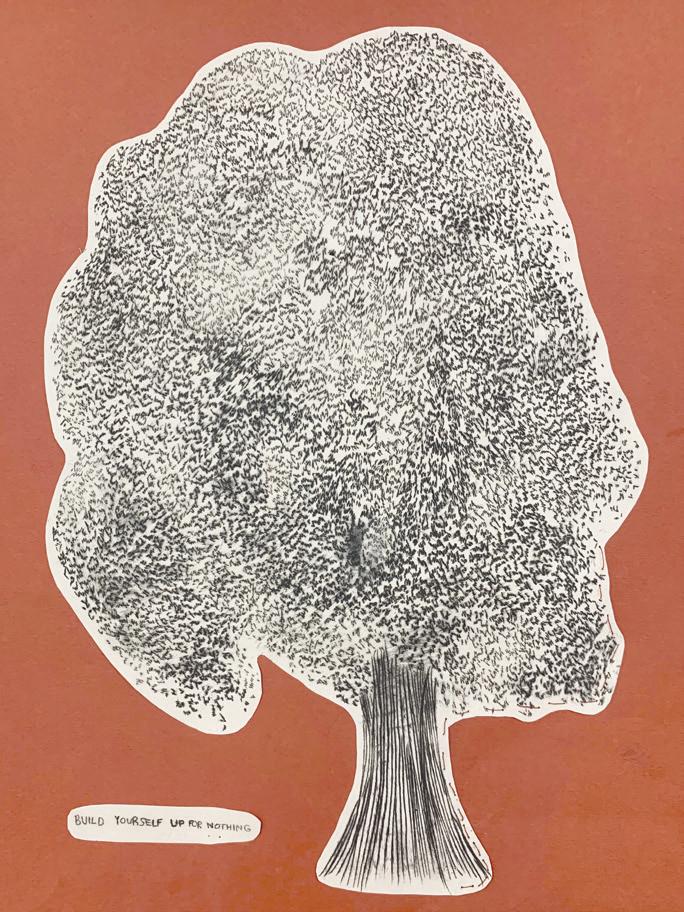
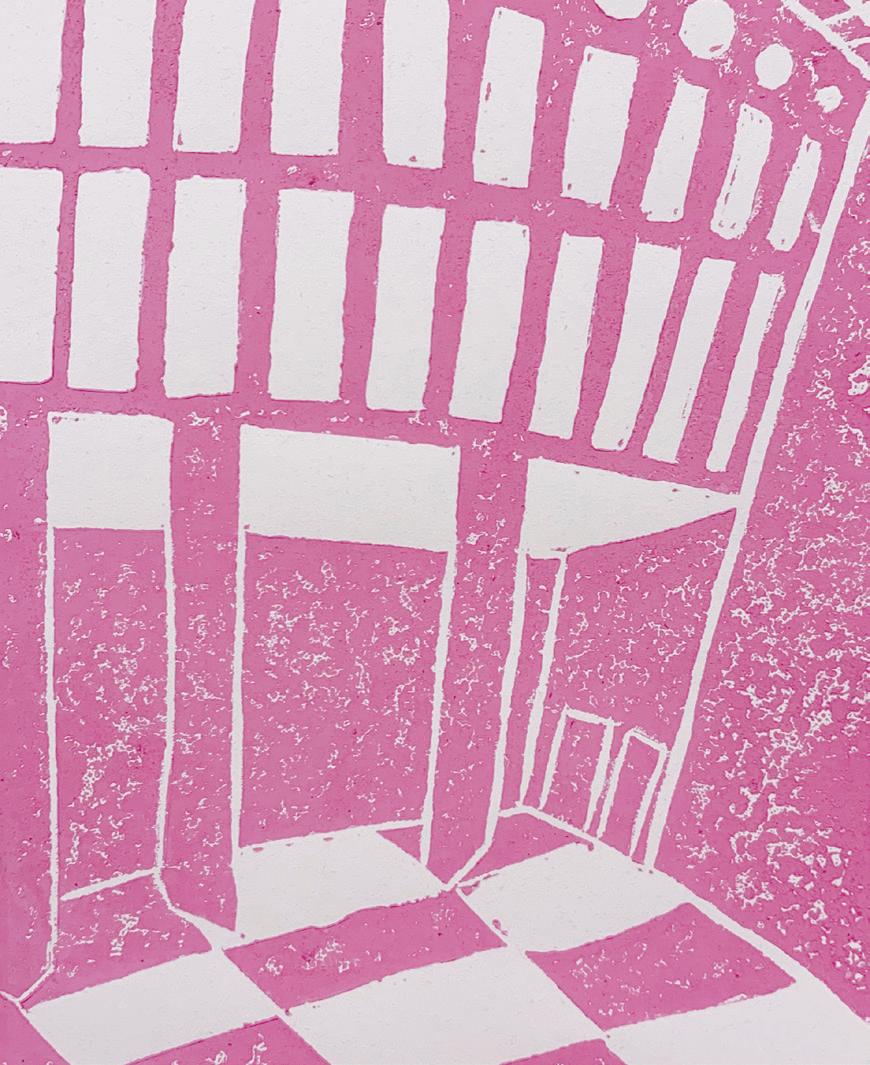
“
“I go to the library really often, so it’s my second home.

Ivy Woolsoncroft
Art Featured
freshman, Madi Reid
Bailey Kivett’s artist of the month: freshman, Allison Cindrell
Want your art in our next issue?

Email a high resolution .jpg or .png file to gretah.freestate@ gmail.com, and be sure to submit an artist’s statement. Art can include, but not limited to, photography, paintings, jewelry, and pottery.

junior, Ivy Woolsoncroft junior, Matt Reimer
Thank you Kitchen Staff
pages by EV Bishop photos by Elana Ho
Before the next lunch period, Kenny Oladimeji gets ready to serve food to students. For Oladimeji, the work environment is very tight-knit. “All of us, we’re a family,” Oladimeji said.
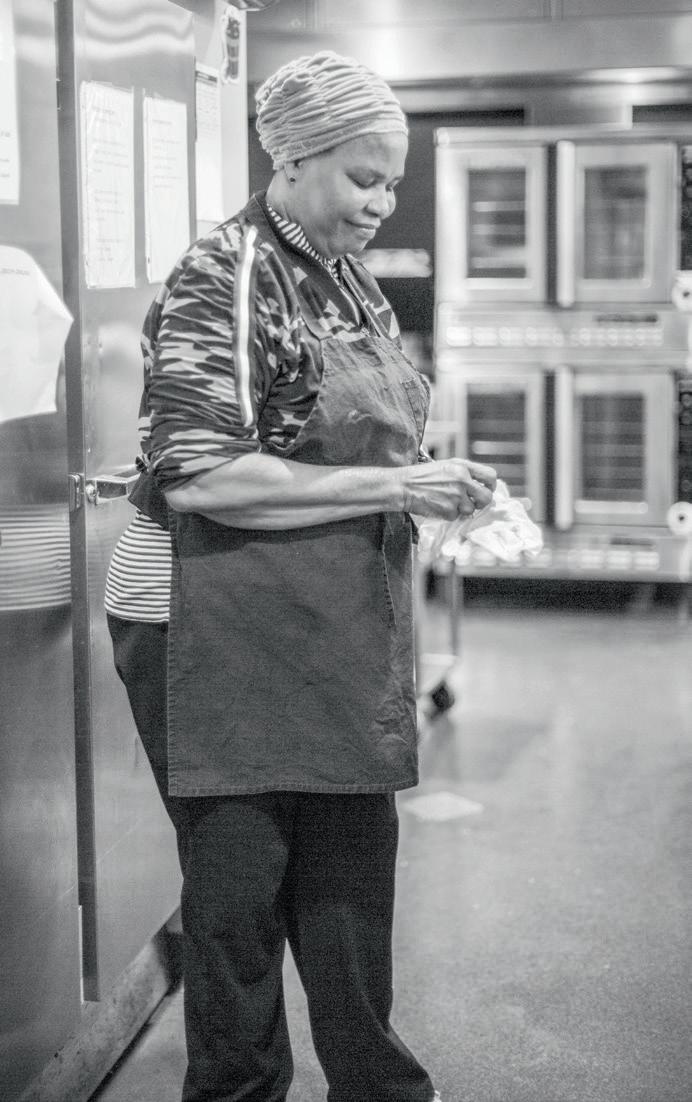
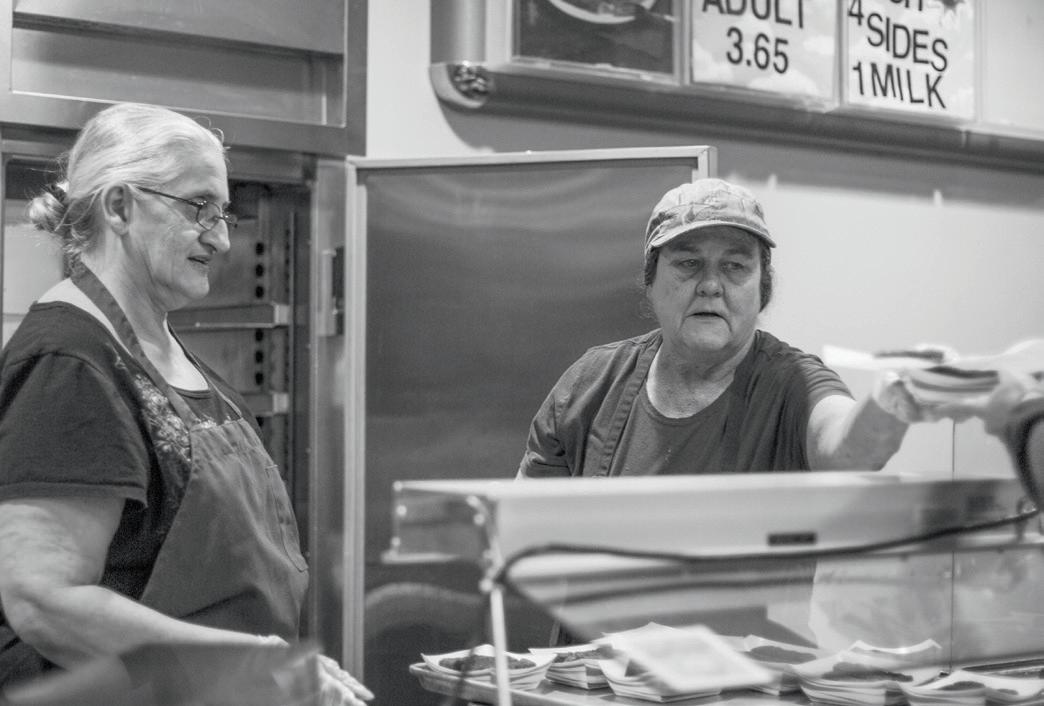
A lunch staffer assembles trays before the next wave of students. For many staffers, the students are a highlight of their job. “I just enjoy it because each day is different,” server Jacolin Miller said.
Pamela Gillmore serves lunch to a Free State student. Gillmore loves interacting with the students. “[The students’] manners are impeccable,” Gillmore said. “I’ve really have not had anybody be rude and I’m so thankful.”
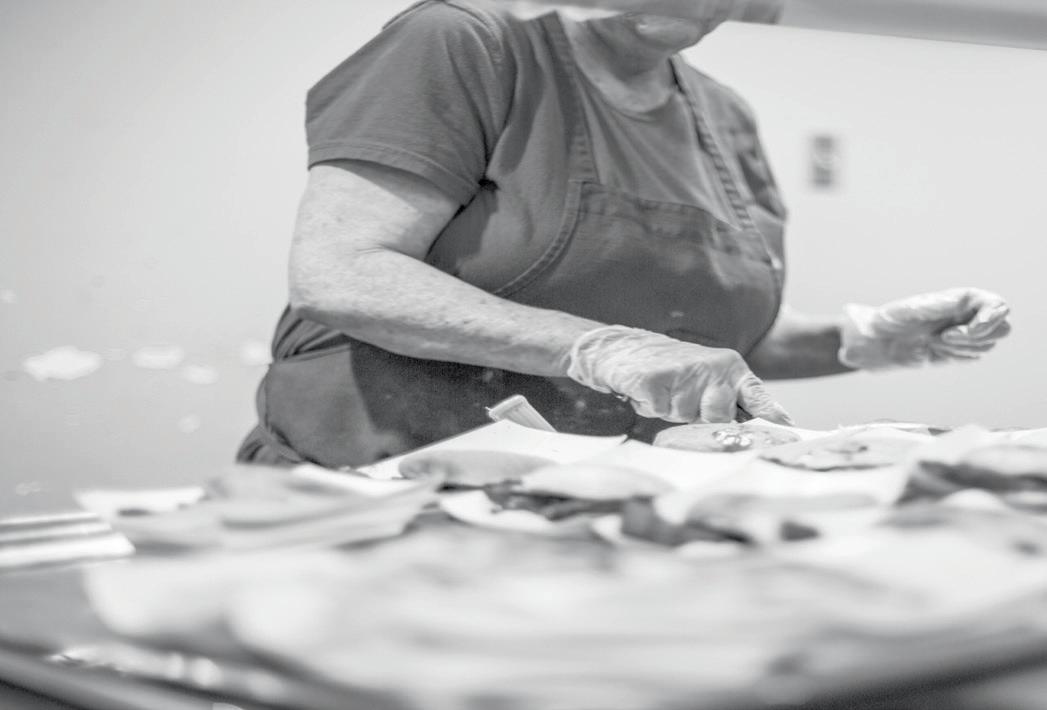
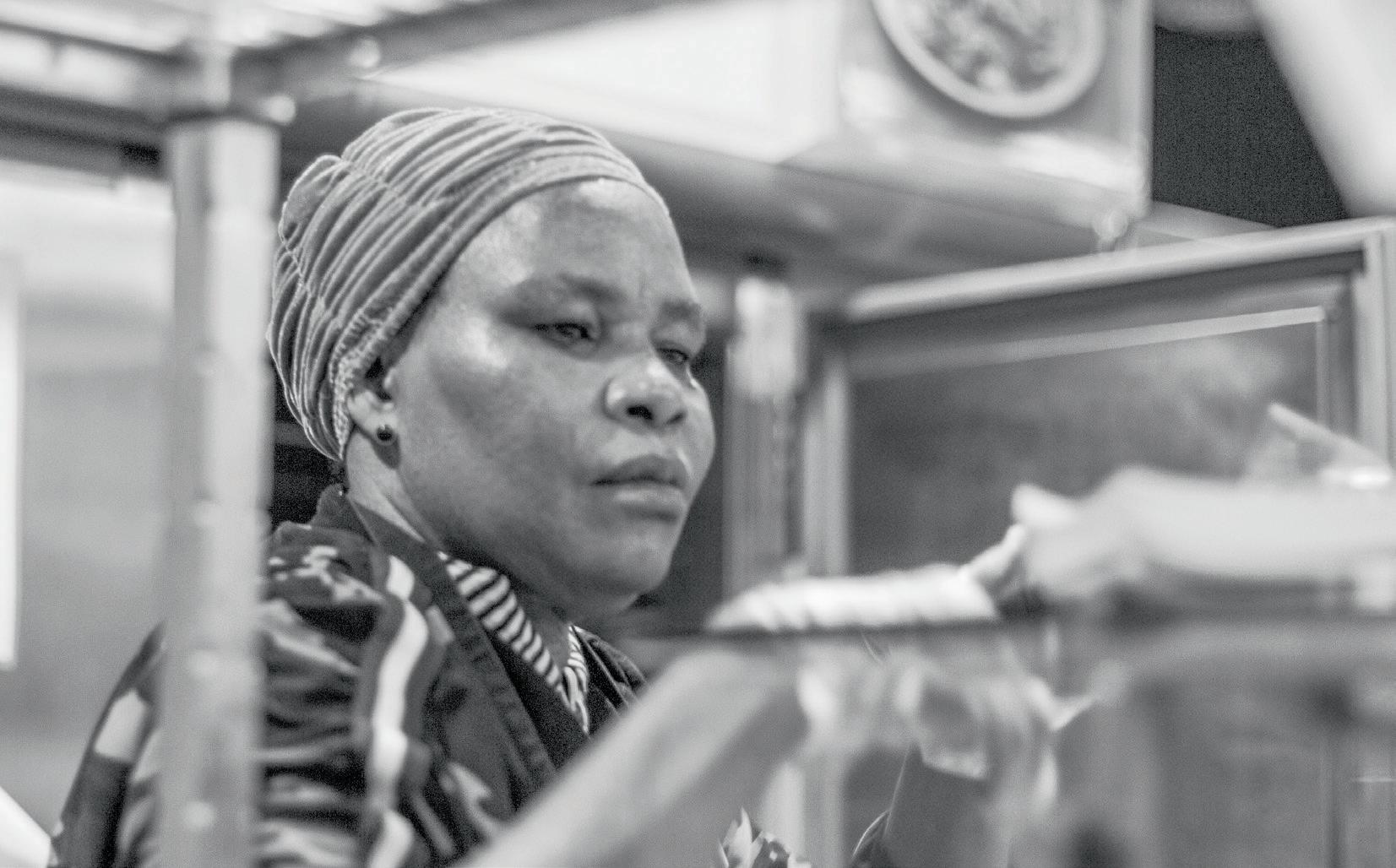
Kenny Oladimeji stacks a tray during lunch hour. Oladimeji enjoys her work. “I came from Nigeria and my husband has worked for the embassy for 25 years,” Oladimeji said.
Georgia Keener serves pizza to students during lunch. Keener has been working here for 11 years. “I just like meeting students,” Keener said. “They keep you young and they keep you going.”
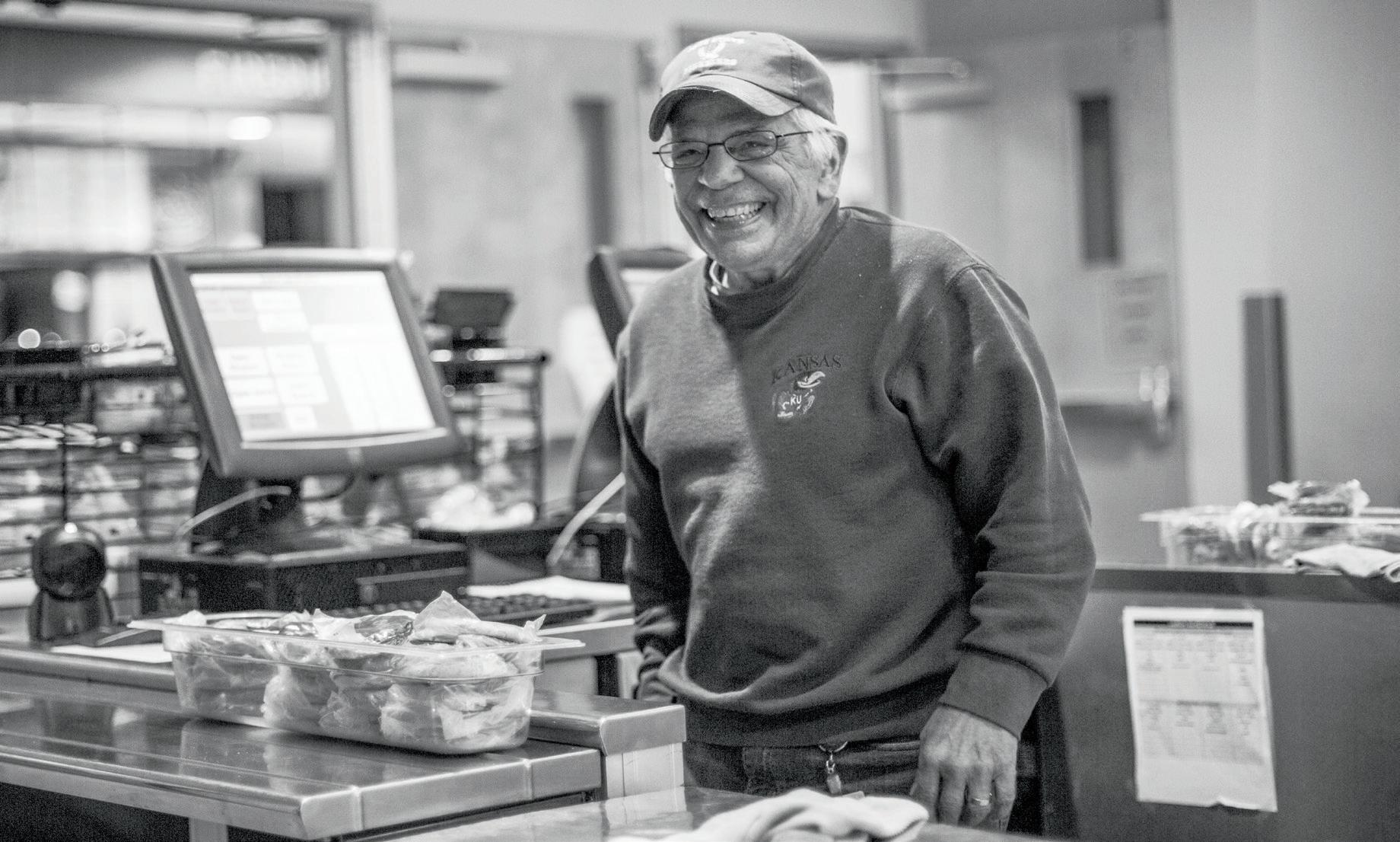
Cashier David Spangler, assists students with purchasing lunch. Spangler previously worked as a sales rep for Kraft Foods before retirement. “After I retired, I wanted a job and so I thought the school district,” Spangler said.
Pamela Gillmore prepares food in between lunches. Gillmore arrives at school at 6:30 every morning to start baking.“Something that people might not understand is how hard it is sometimes,” Gillmore said. “It’s a lot of options to prepare.”


1 in a Million
pages by Angel Singhal
Winning the $1 billion jackpot
1 in 88 quadrillion
1 in 60 million GETTING IN A PLANE CRASH



